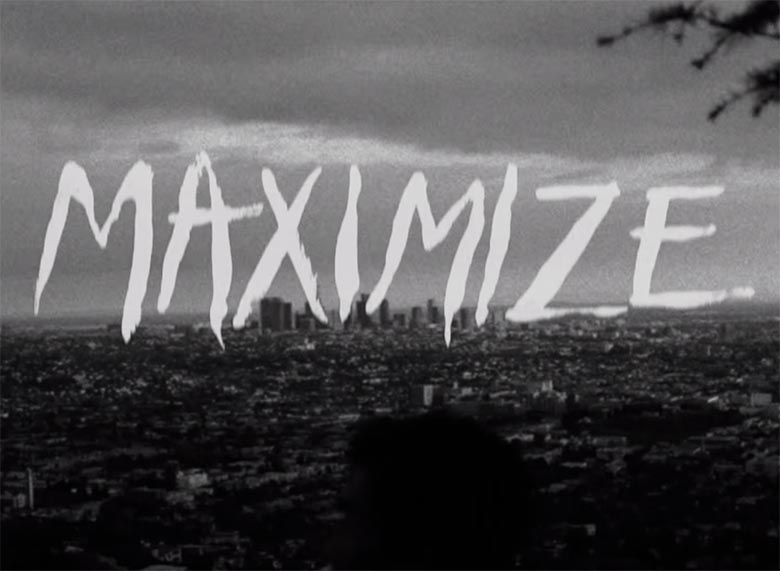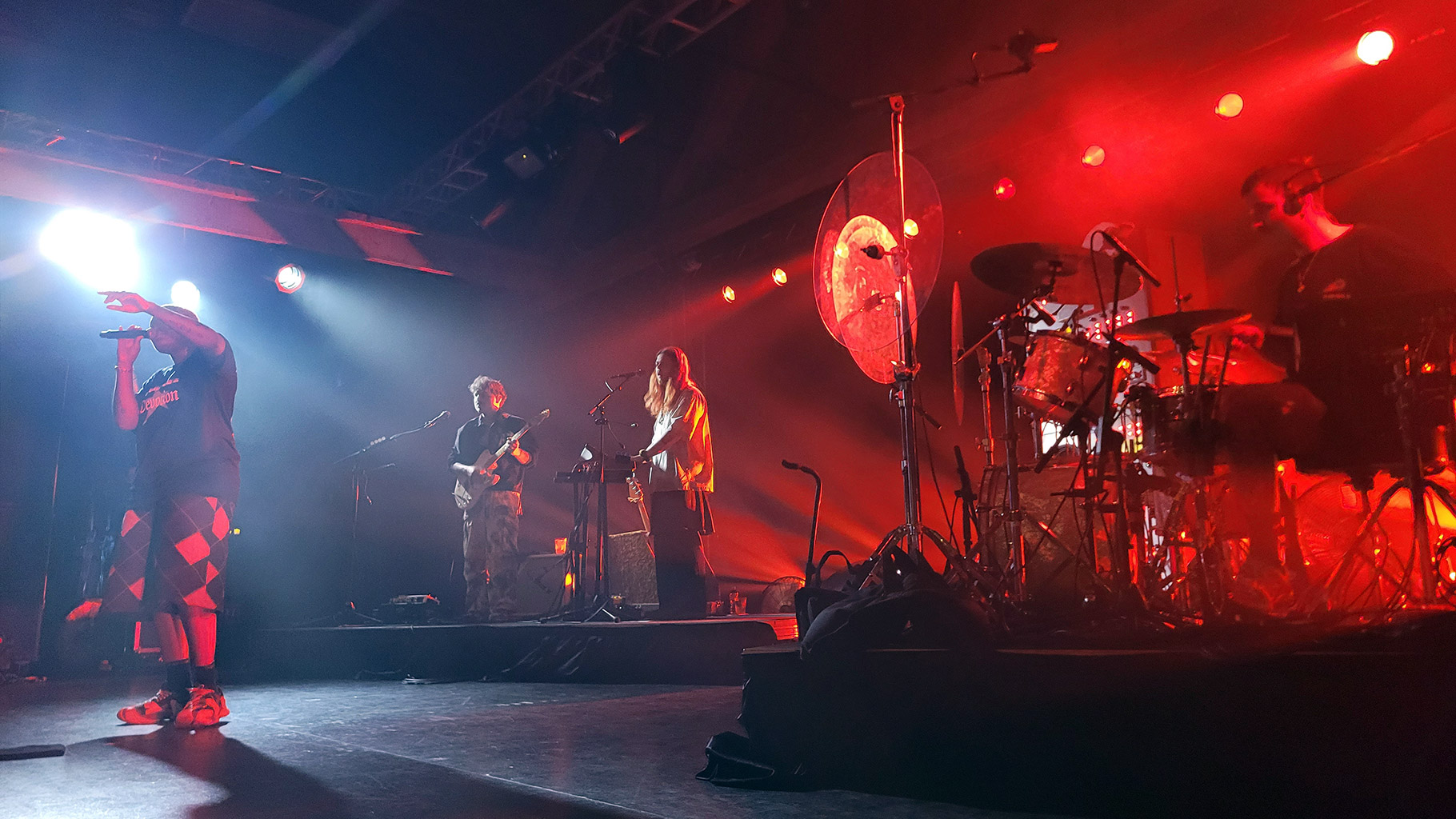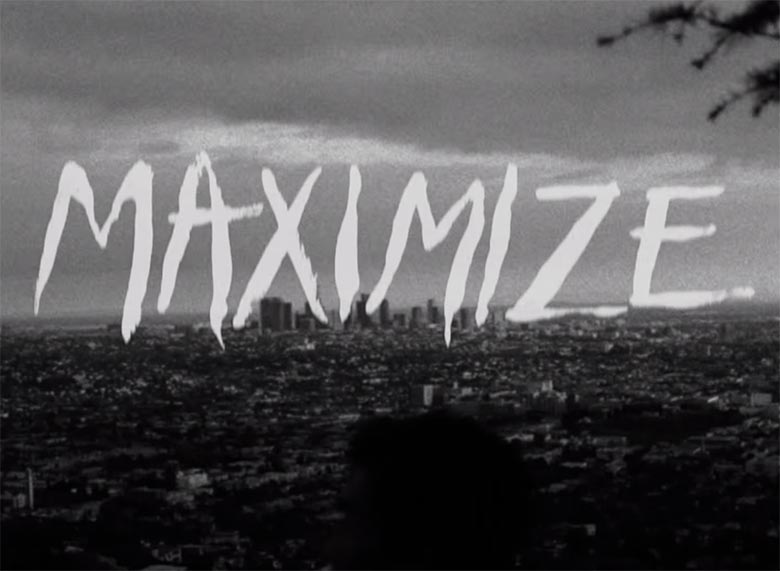
Director & Editor – David Del Sur
Director of Photography – S.L. Perlin
You can also view all of our articles on Gardens & Villa, dating back to 2010.
You are all long-time friends and collaborators. How was this particular project conceptualized?
This project came in to being when G&V was in the studio recording Music For Dogs. Del Sur happened to be in Los Angeles and was running around town with S.L. Perlin. they casually stopped by the studio and hung out for a bit. Then they disappeared and showed up 2 hours later with a very old camera and a weird lighting rig. We were in the middle of tracking, and it was pretty dark. One of them shot with the camera and the other one was following with the light apparatus. They both had huge smiles on their faces. We didn’t know they would combine the footage into the doc, but we knew they were cooking something up. I guess that’s how it always works: spontaneous action and scenes captured through the eyes of S.L. Perlin, and then Del Sur ties it all together and aligns it with his unique vision. They are both brilliant, and we all tend to agree on things like sound and aesthetic. We all hang out a lot too, so it’s really fun to work on stuff together.
[Director of Photography] Steven [Perlin] expressed wanting to do something with images of the band he had been capturing and asked me to be a part of it. I remember being impressed by the first set of photos he showed me, but I was really busy at the time, so I said no. After a bout of inspiration, I quickly changed my mind to make the imagery into a movie. From there, I took my coffee table book of every image in La Jetée and started creating rules for the project.
This mini-doc is inspired by La Jetée. What do you find most appealing about that work, and what from it were you hoping to extend to this?
That work is so beautiful and dark and mysterious. Del Sur and S.L. Perlin were sort of obsessed with it for a while, and they turned us on to it. Both of them believed that showing the context of Music For Dogs and capturing Los Angeles in this way would represent the mood we were all feeling. They felt connected in a weird way, and we are all sort of old souls, I guess. Maybe we just prefer older ways of doing things because it feels less cheap.
I like how Chris Marker created a compelling science fiction film with still imagery (with the exception of one moment) and voice over. It’s good ol’ fashioned storytelling.
We extended the idea by making the still images move at some points and by adding some moments of traditional motion.
These concepts are not ground-breaking. However, it provided strict guidelines to create, which I enjoy. Constraint is often a friend of mine.
Inspiration from Chris Marker – La Jetée (1962)
“Maximize” is a collection of moving image and still photography, using Super 8 and 35mm film cameras. How long did filming take, and how much was manipulated in post-production?
I have no idea how to answer this… sort of a Del Sur/Perlin question.
The images were taken over the course of three months. I was around for the studio and interview scenes. Steven followed the boys around for the rest.
There wasn’t a whole lot of “manipulation” in post. I made the end credits first because I was inspired by the amount of night photos we had. I thought it would be great to make the light in them move, giving them a kind of pulse. Once I figured out the best way to achieve that look, the rest was simple.
The narrative of the video surrounds the dilemma of living in the modern world and conveys this while using vintage equipment. The aesthetic benefit is obvious — but how does the choice of equipment contribute to the philosophical message at hand?
This is another question for the two of them… but in my own opinion, it aligns with a similar philosophical ideal that was behind Music For Dogs. Most of the record was recorded onto 2-inch tape, and the signals passed through multiple layers of analog equipment before being put into a computer. Similar to shooting with film and then editing on Adobe or whatever. I guess in addition to preferring the sounds and images that vintage equipment captures, we all appreciate the art of using these old machines and the time it takes to learn how to use them… and the finality of their action. Once you press “record”, you can’t just delete and re-record a million times, like you can with digital equipment. So I guess you really have to think about what you are doing and be precise. Are we the last generation to appreciate these old technologies? Will kids in 20 years be mixing and mashing like this? I hope so.
Technology is technology, whether old or new. At one point in time. the gear we used was state-of-the-art.
Since I knew I was going to do the narration, I felt more comfortable speaking into a tape machine rather than into a computer. It helped me shape the world that story lives in. Also, Marker recorded into a tape machine, and I already owned one from the same era, so it made sense to do the same.
At heart, I’m device agnostic. The gear we use depends on the story we are trying to tell. Steven only uses analogue machines and is much more of a purist than me. That said, 85% of the work I have done has been on film. I love it and generally prefer it to digital.
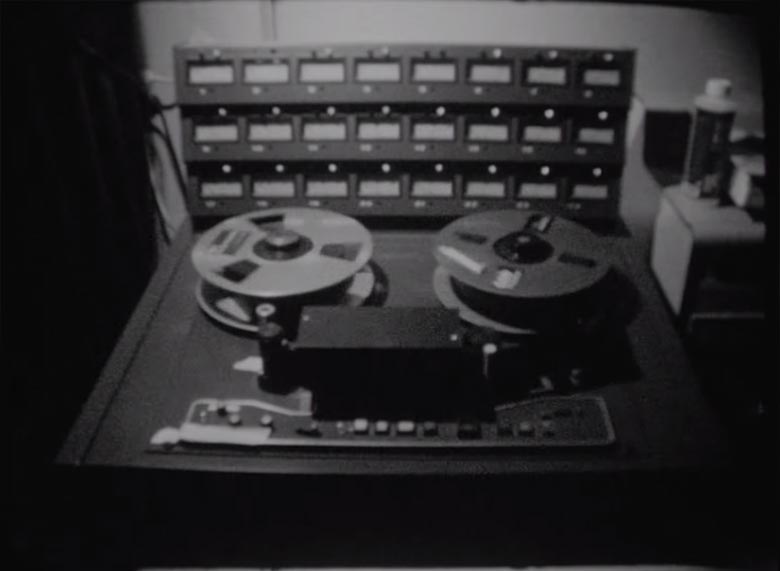
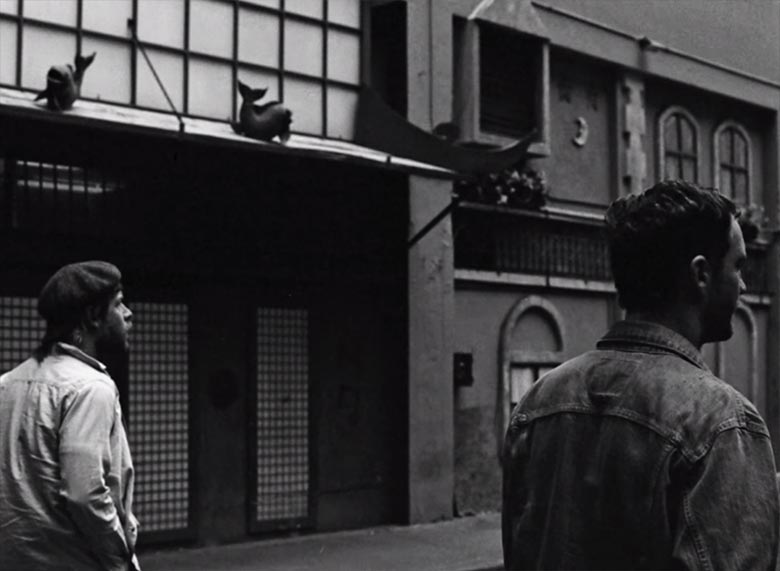
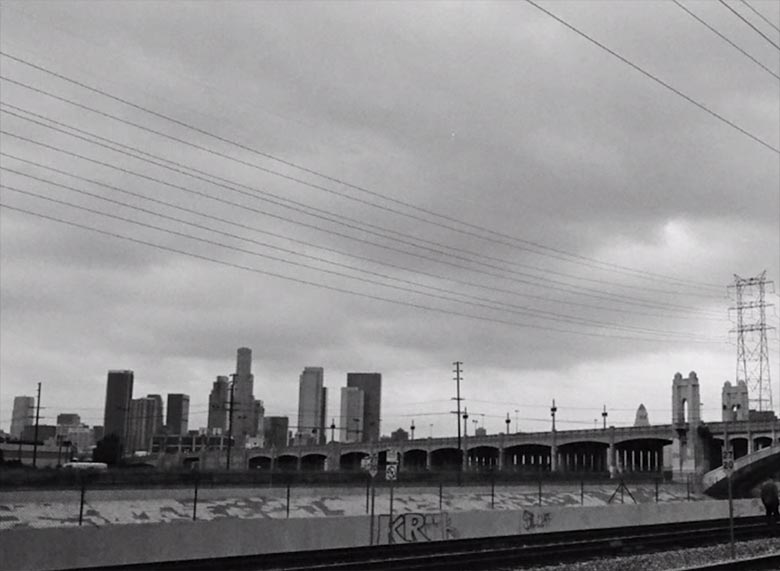
The video is intended to capture the “mental and physical environment in which the music was created” — a bit raw, a bit dystopian. What are some moments or feelings which stick out as particularly representative of this environment?
Living by the LA river automatically makes you feel sometimes (if you adventure around) like you are on the border of some forgotten part of Gotham. We occasionally look for abandoned buildings/complexes close by and then sneak in to them to explore a little. It’s crazy what you find. To step in to these old spaces from forgotten eras not covered with graffiti and decay. LA was built so fast and so much of it during the huge booms of the 20th century. It has such a strong flavor, and it’s just such a massive grid. The energy is overwhelming if you think about it too hard. That’s a bit of what we were trying to convey.
The band lives in a part of Los Angeles that is rarely spotlighted. The amount of homeless seem to stick out the most. The lives they lead are really interesting to me and Steven.
Steven has a knack for befriending the overlooked wherever he goes. He asks what they want in exchange for the privilege of taking their photo. Whenever possible, he goes back to find the subjects he shot so they can see how they look through his lens. Their reaction is often an enthusiastic, “Do you have any more?” He usually doesn’t because he usually only takes one shot.
The images captured were not what’s glamorized. That reality is the most interesting to us.
The images are shot in Los Angeles, but are there other cities or locations that come to mind as parallels? What is consistent between these places, and what do you find attractive about them?
I think many of the cities in America have a similar feel. Especially the cities like Detroit that were similarly and hastily built around the booming automobile culture of the mid-20th century. Most cities have layers and layers of architecture that represent different eras. LA was built to be a “city of the future”, where people could just hop on the freeway and get anywhere in a jiffy! All spread out; everyone with their own piece of America. A lot of cities have neighborhoods or suburbs that were built around that same philosophy, and now it is crazy to see it 50-60 years later… kind of like a mixture of, “What the hell were they thinking?” and “This is really so odd and kind of beautiful,” as it matures and the structures start to age.
I don’t really know. I live in New York City and spend the bulk of my time here and in LA. By nature of geological and weather conditions, all the cities I go to are unique and attractive in their own right.
What do you find most exciting about future technologies, and what do you find most disheartening about it?
Exciting = renewable energy sources, obviously… hopefully this will allow us to re-engage with nature and return to nature in a harmonious way. Healthy advancements in medicine and psychology and such.. To a certain extent, connectivity and the internet — having access to so much cool information! I think we are finally starting to understand that we have to change the way we conduct business on this planet in a big way and technology could help smooth over that transition. Disheartening = The inverse of much of what I said above. Like the obvious pollution and weapons and all that negative jazz. There is almost too much of it to mention. I think the internet also can become a sea of complete shit that one can easily get lost in. Especially a child. I think we were the first generation to discover this. I read recently on NPR that our brains are not designed to have more than roughly 100 friends… so all this obsessive social media stuff can really mess with you in a lot of negative ways.
Future technologies are helping to add healthy years to people’s lives. I think that is fantastic.
I don’t find technology itself disheartening, I find people’s relationship with technology odd. Social laziness is among us. Because of this, I believe raw emotion will be a commodity in the future.
Ω

